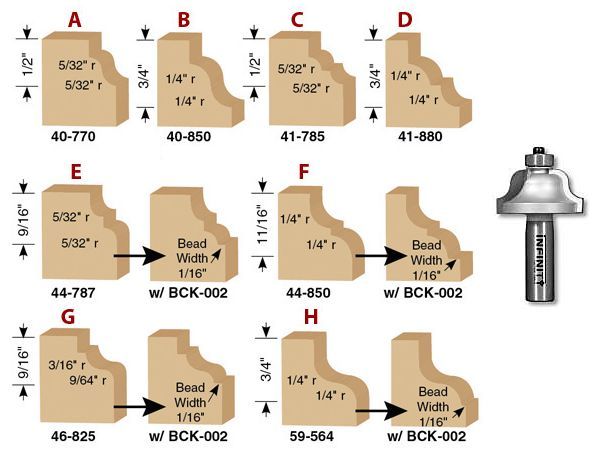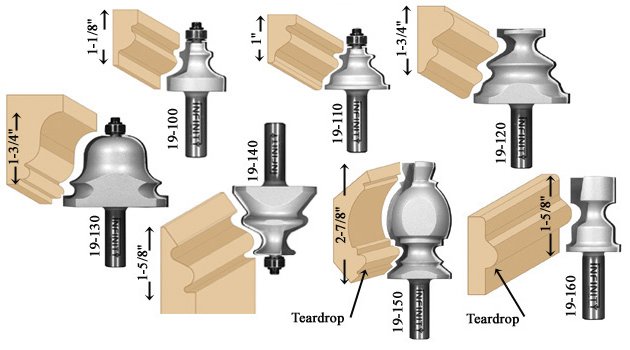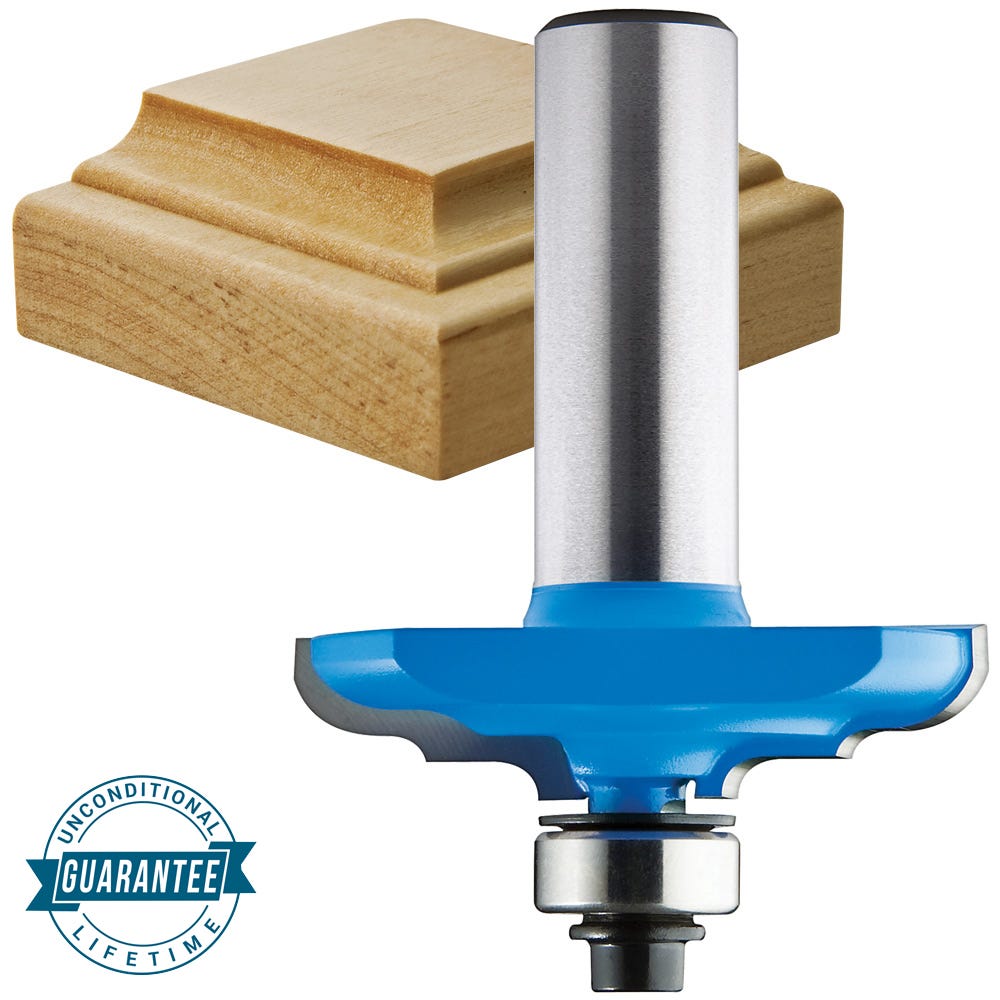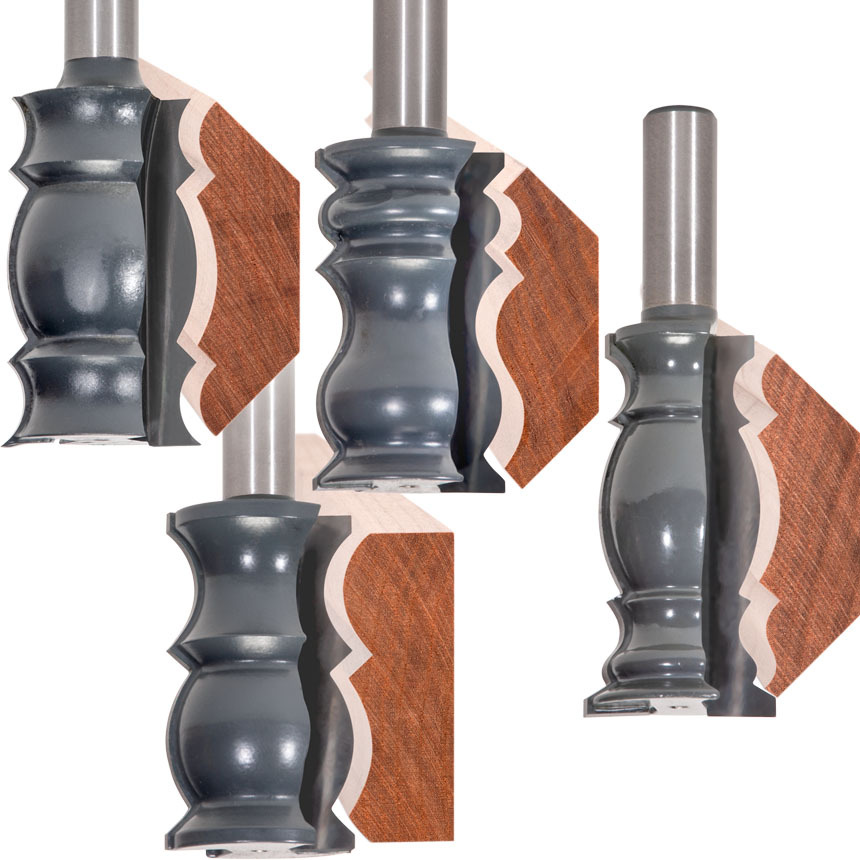As a passionate woodworker, I’ve spent countless hours in my workshop experimenting with various tools and techniques. Among the essential tools in my arsenal are decorative router bits, which have allowed me to elevate my projects from simple to stunning. In this comprehensive guide, I will share everything you need to know about decorative router bits, including types, uses, benefits, and tips for selecting the perfect bits for your projects.
What are Decorative Router Bits?
Decorative router bits are specialized tools used with a router to create intricate designs, patterns, and profiles on wood and other materials. Unlike standard router bits that focus on functional cuts, decorative bits are all about aesthetics. They can be used for edge treatments, grooves, dados, and even making decorative inlays.
Types of Decorative Router Bits
Understanding the different types of decorative router bits is essential for any woodworker. Here are some of the most common types:
- Roundover Bits: These bits create a rounded edge on the corners of your project.
- Chamfer Bits: Perfect for creating angled edges, chamfer bits add a distinct look to your projects.
- Cove Bits: Used to create concave arcs, these bits can add depth to your edges.
- Fillet Bits: These bits produce a radius in corners, providing a smooth transition between surfaces.
- V-Groove Bits: Ideal for creating decorative V-shaped grooves, perfect for signage and artistic borders.
- Flush Trim Bits: These bits are used to trim or shape edges to a flush finish, especially useful for laminates.
- Inlay Bits: Designed for creating joints or inlays, these bits are great for producing intricate designs.
How to Choose the Right Decorative Router Bit
When selecting decorative router bits, consider the following factors:

1. Project Requirements
Identify the design and finish you want for your project. This will help guide your bit selection.
2. Material Type
Different materials may require specific bits. Ensure you have the right bit for wood, MDF, or softer materials.

3. Bit Quality
Invest in high-quality bits. They are often made from carbide, which lasts longer and provides better cuts.
4. Router Compatibility
Check that the router bits are compatible with your router model for optimal performance.

5. Budget
While it’s tempting to go for the cheapest option, remember that investing in quality bits can save you time and money in the long run.
Popular Brands of Decorative Router Bits
Several brands are known for producing high-quality decorative router bits. Here are a few to consider:

| Brand | Key Features | Price Range |
|---|---|---|
| Freud | High-quality carbide, precision ground, extensive selection | $$$ |
| Whiteside | Made in the USA, durable, professional-grade | $$$ |
| Bosch | Affordable, versatile, reliable performance | $$ |
| Amana Tool | Innovative designs, high-quality materials | $$$ |
| Ryobi | Budget-friendly, good for hobbyists | $ |
Pros and Cons of Using Decorative Router Bits
Like any tool, decorative router bits have their advantages and disadvantages. Here’s a breakdown:

Pros
- Enhance Aesthetics: Add intricate designs and details to your projects.
- Versatility: Can be used on various materials for different applications.
- Efficiency: Allows for quick creation of complex shapes and profiles.
- Professional Finish: Provides a polished look to woodworking projects.
Cons
- Learning Curve: Requires practice to master different techniques effectively.
- Cost: High-quality bits can be expensive.
- Maintenance: Regular sharpening and care are necessary to maintain performance.

How to Use Decorative Router Bits Safely
Safety should always be a priority when working with routers and decorative bits. Here are some essential safety tips:
1. Personal Protective Equipment (PPE)
Always wear safety goggles and hearing protection to protect against flying debris and noise.
2. Read the Manual
Familiarize yourself with your router’s manual and the specific decorative bit you are using.
3. Secure Your Workpiece
Use a stable workbench or clamps to secure your material before routing.
4. Start at a Low Speed
Begin with lower speeds until you are comfortable with the bit’s performance.
5. Follow Cutting Direction
Always route in the correct direction. Most bits cut best when the router moves against the direction of rotation.
Practical Applications of Decorative Router Bits
There are numerous creative ways to use decorative router bits. Here are a few practical applications you might explore:
1. Furniture Making
Add unique edge profiles to tables, chairs, and cabinets to enhance their visual appeal.
2. Sign Making
Create custom signs with clear, sharp lettering and designs that stand out.
3. Home Decor
Use router bits to create decorative panels, frames, and accents for your home.
4. Wood Inlay
Combine different types of wood for stunning inlay work that draws the eye.
Common Mistakes to Avoid with Decorative Router Bits
As with any craft, mistakes can be costly. Here are some common issues to watch out for:
1. Skipping Test Cuts
Always do test cuts on scrap wood to ensure your settings and techniques are correct.
2. Overheating Bits
Routing too quickly can overheat the bit, leading to damage. Take your time and route at a steady pace.
3. Improper Setup
Ensure your router is set up correctly with the right bit height and speed for the material you’re working with.
FAQs About Decorative Router Bits
1. Can I use decorative router bits on softwood and hardwood?
Yes, decorative router bits can be used on both softwood and hardwood. However, you may need to adjust your speed settings based on the material.
2. How do I clean and maintain my decorative router bits?
Keep your bits clean by wiping them with a cloth after use and using a bit cleaner for resin buildup. Store them in a safe place to avoid damage.
3. What’s the difference between a straight bit and a decorative bit?
A straight bit is primarily used for basic cuts, while decorative bits are designed to create specific shapes and edge treatments for enhanced aesthetics.
4. How do I sharpen decorative router bits?
While some bits can be sharpened at home, it’s often best to have them professionally sharpened for optimal performance.
5. Are there any alternatives to decorative router bits?
Yes, you can achieve similar effects with chisels, hand planes, or other woodworking tools, but they may require more skill and time than using router bits.
Conclusion
Decorative router bits are a fantastic way to add beauty and professionalism to your woodworking projects. By understanding the different types, their uses, and how to use them effectively, you can transform ordinary pieces into extraordinary creations. Don’t be afraid to experiment and find your unique style. Happy routing!